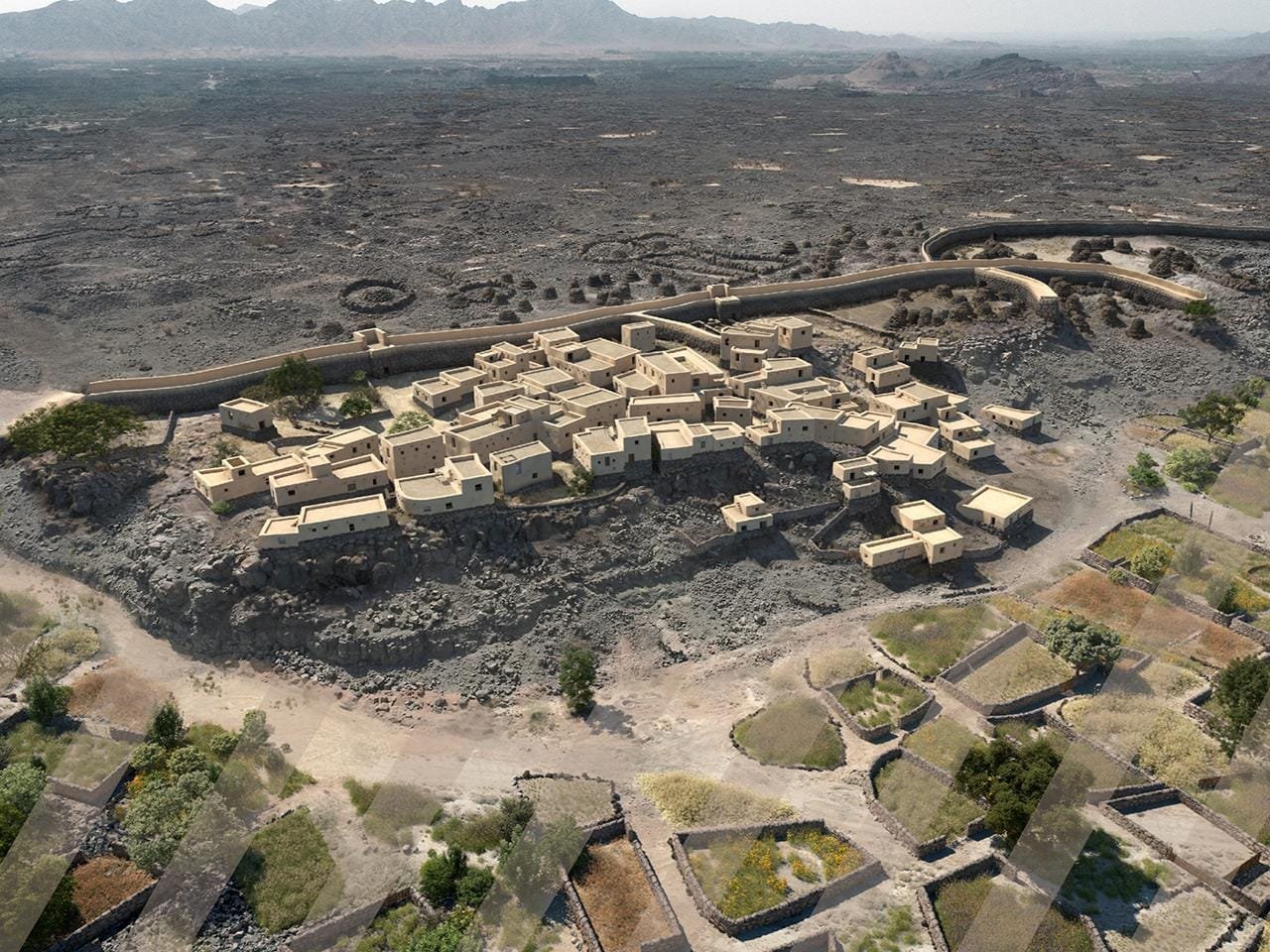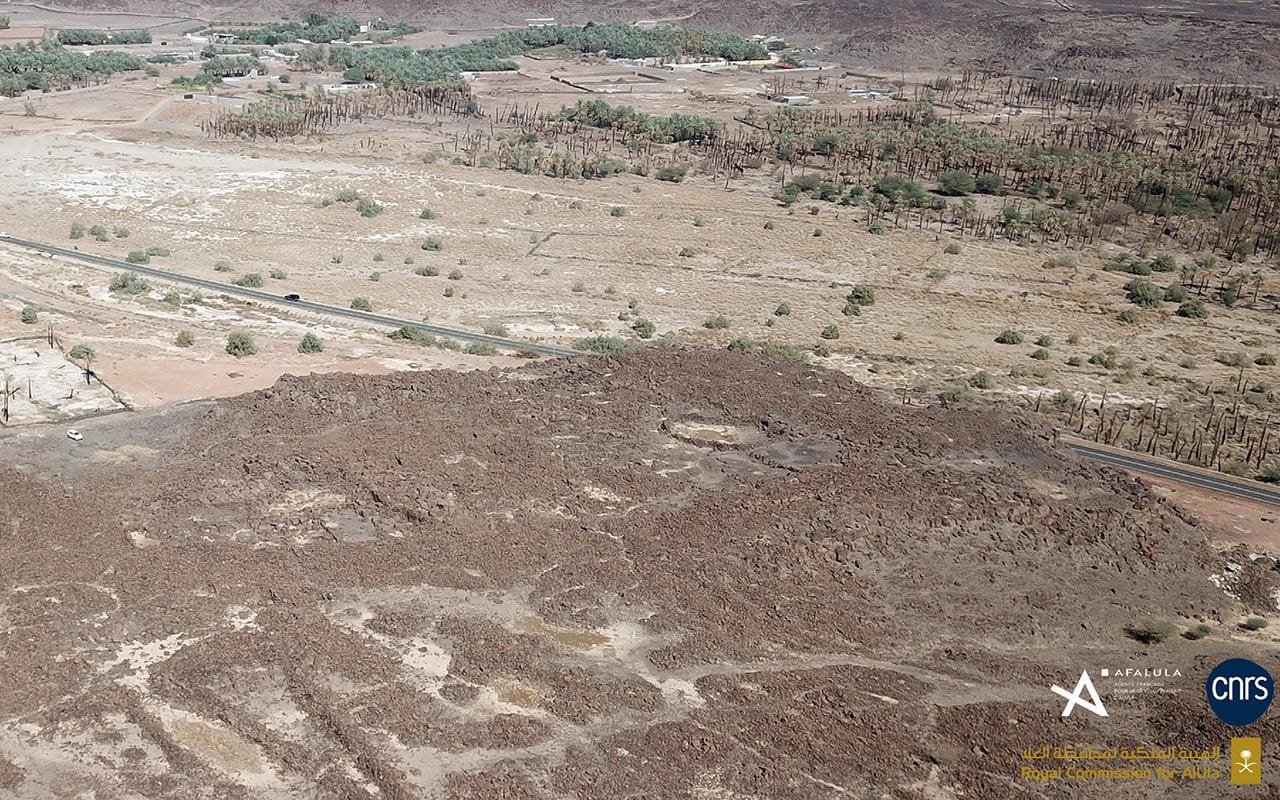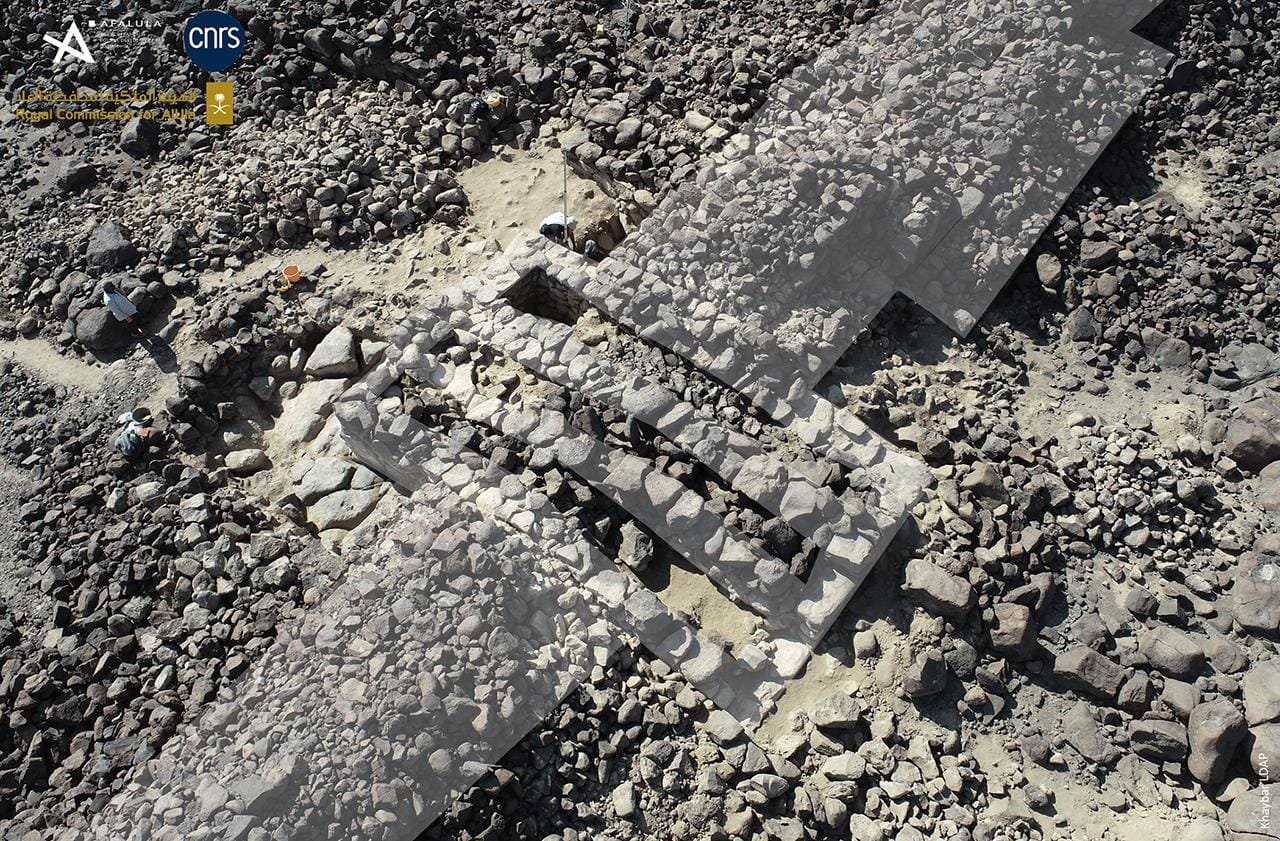Archaeologists have uncovered a fortified town dating back over 4,000 years at the Khaybar Oasis in northwest Saudi Arabia, revealing gradual urbanization in the Arabian Peninsula during the early Bronze Age. This town, named al-Natah, sheds light on the transition from a nomadic to a more urbanized lifestyle among ancient societies in the region, contrasting with the rapid urban growth in Mesopotamia and Egypt during the same period.
 3D virtual reconstruction of the Bronze Age site of al-Natah. Credit: Charloux et al,. PloS One, 2024, (CC-BY 4.0)
3D virtual reconstruction of the Bronze Age site of al-Natah. Credit: Charloux et al,. PloS One, 2024, (CC-BY 4.0)
French archaeologist Guillaume Charloux, leading the research for the French National Center for Scientific Research (CNRS) in collaboration with Saudi researchers, explained that al-Natah was built around 2400 BCE and remained inhabited until roughly 1300 BCE. The town, spanning approximately 2.6 hectares (6.4 acres), could accommodate around 500 residents and was fortified with walls as high as 16 feet. “Our findings suggest that the people of al-Natah engaged in a slower, region-specific process of urbanization,” Charloux told AFP, noting that the settlement’s structure and fortified ramparts indicate a significant level of social organization in a region traditionally dominated by nomadic communities.
The layout of al-Natah reflects a carefully planned settlement. The town is divided into a central administrative zone and a residential district interconnected by narrow streets. The residential area contained about 50 houses built to support at least one or two stories, while a necropolis in the western section contained circular “stepped tower tombs” as well as metal artifacts, including axes and daggers, and precious stones like agate. According to the researchers, these items hint at a relatively advanced and socially organized community. Charloux added that pottery discovered at the site shows an egalitarian society, with ceramics that are “very pretty but very simple.”
The Khaybar Oasis, known for its fertile land amid a vast desert, provided a haven that may have supported agriculture, though only scant traces of cereal grains have been found so far. This walled town may have protected its residents from potential raids, with a 9-mile-long (14.5 kilometers) fortification encircling the area. “Our findings demonstrate that these ramparts were organized around a habitat,” Charloux explained, adding that the site offers insights into how fortified oases may have functioned as social and trade hubs for local and distant groups.
 Al-Natah site in Khaybar Oasis. Credit: Charloux et al,. PloS One, 2024, (CC-BY 4.0)
Al-Natah site in Khaybar Oasis. Credit: Charloux et al,. PloS One, 2024, (CC-BY 4.0)
This gradual path to urbanization, described as “low urbanization” or “slow urbanism” by the study, marks a notable distinction from the contemporaneous urban centers in the Levant, Mesopotamia, and Egypt. In Mesopotamia and Egypt, urbanization began in the fourth millennium BCE, with the rise of large, complex cities and centralized governance. In contrast, al-Natah represents a more modest and gradual shift towards settlement, adapted to the unique environmental and cultural conditions of northwest Arabia. Charloux noted that “this slow form of urbanization” might have even supported early trade networks, including connections to the renowned incense route that later facilitated trade in spices, frankincense, and myrrh from southern Arabia to the Mediterranean.
The al-Natah discovery follows earlier findings at the Tayma Oasis, where archaeologists found similar fortifications from the same period. This “first essential discovery,” as Charloux called it, encouraged further exploration in the Khaybar region. Basalt rocks in the area helped to preserve the site from illegal excavations, and aerial observations led archaeologists to uncover the town’s paths and foundational structures.
 A tower in the southern rampart of al-Natah site, facing southwest. Credit: Charloux et al,. PloS One, 2024, (CC-BY 4.0)
A tower in the southern rampart of al-Natah site, facing southwest. Credit: Charloux et al,. PloS One, 2024, (CC-BY 4.0)
The reasons for al-Natah’s eventual abandonment around 1500–1300 BCE remain unclear. “It’s a pertinent question that we can’t answer at the moment,” Charloux stated, emphasizing that while much has been uncovered, there is still extensive work required to fully understand the complexities of this ancient settlement.
More information:Charloux, G., Shabo, S., Depreux, B., Colin, S., Guadagnini, K., Guermont, F., … AlMushawh, M. (2024). A Bronze Age town in the Khaybar walled oasis: Debating early urbanization in Northwestern Arabia. PloS One, 19(10), e0309963. doi:10.1371/journal.pone.0309963





